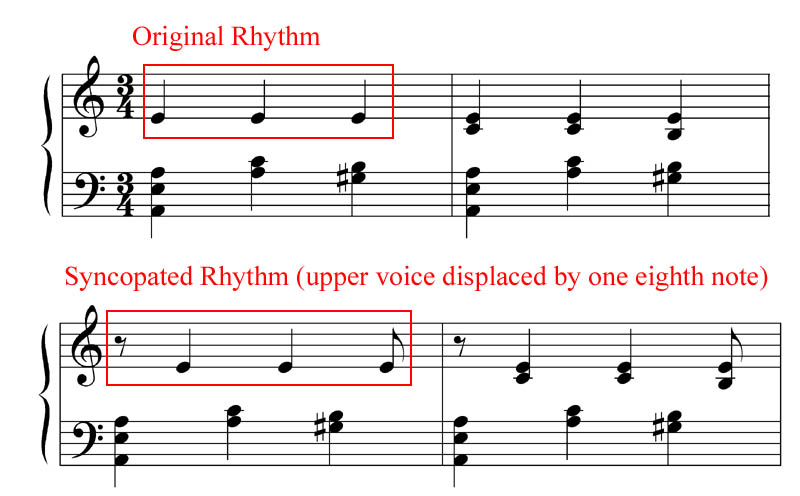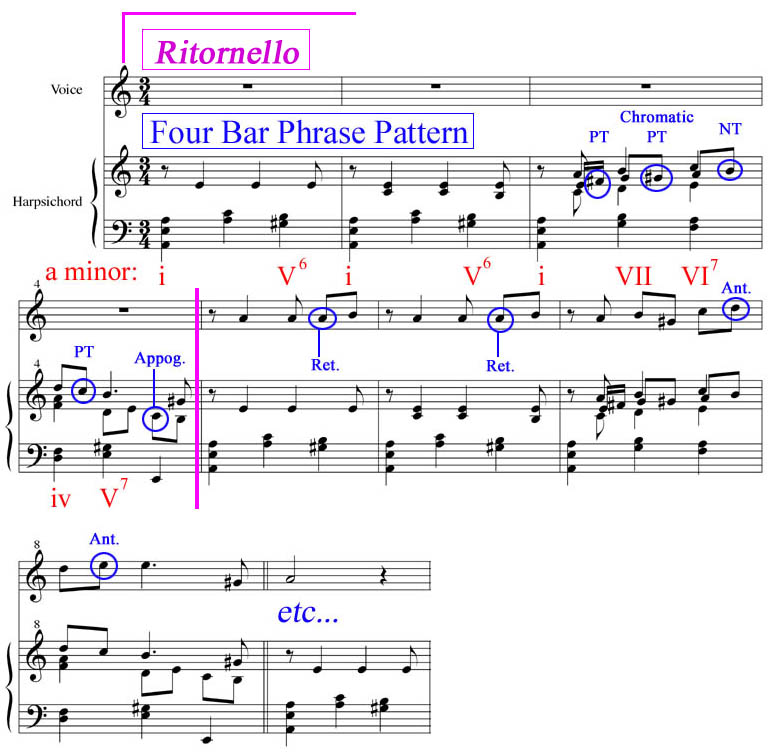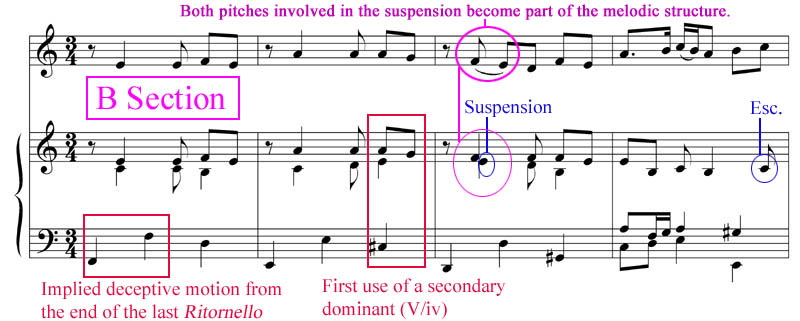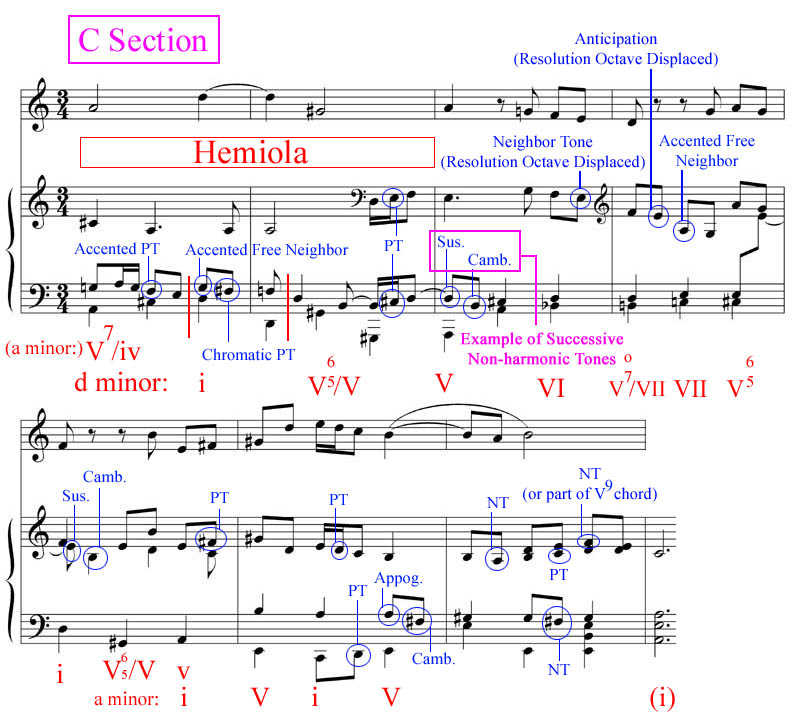Nearly every instrumental form that we are familiar with in the Western canon began as a vocal form. The vocal aria is one of the most varied genres, taking on many guises throughout the past five hundred years. During the Baroque era, the aria was itself sometimes built on the rhythms of instrumental dance movements. Henry Purcell (1659-95), one of the first opera composers in the English tongue, used such an approach in some of his pieces. We will be creating a new piece in the style of Purcell for a solo voice and accompaniment. In so doing, we will explore some of the many techniques of the period that endured.
Our composition will, as well, be based on the Baroque dance form of the sarabande (a slow, often somber dance-based structure in 3/4 time). We will structure the sarabande as a rondo with a four bar refrain (or ritornello - Italian for 'return'). The idea of the ritornello is to act as the anchor of a rondo: no matter how far the composer may stray in the development of the music, s/he must always come back to this refrain. Therefore, the ritornello should have a distinct and engaging character in order to sustain interest for the listener who will be hearing it repeatedly throughout the piece.
AUDIO and MIDI files can be listened to on this page or downloaded separately here.
1. Syncopation. A key element Purcell exploited in numerous pieces was the rhythmic device of syncopation. His method of implementing syncopation involved breaking up the constituent voices of a series of chords into two strata of independent activity and offsetting one by a half beat (or less). In our piece we have begun with a very simple progression in even quarter notes and then displaced the upper part by one eighth note.






